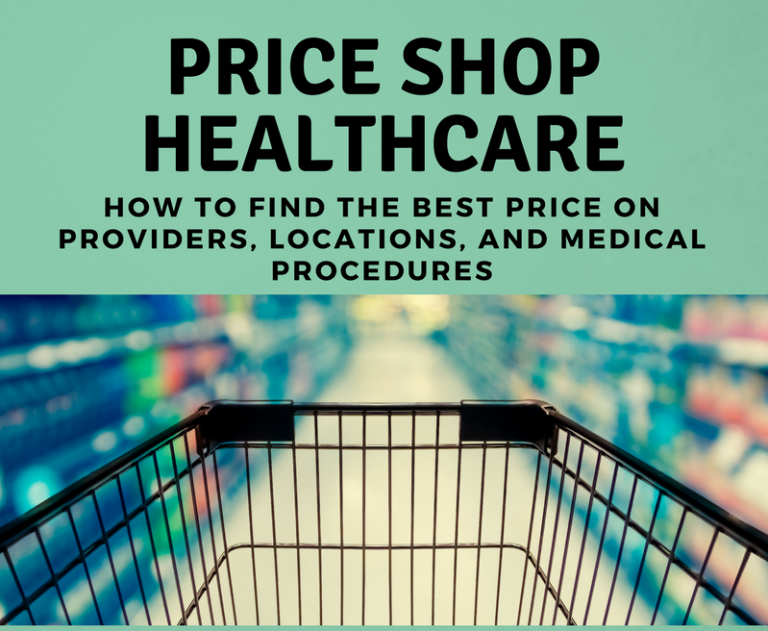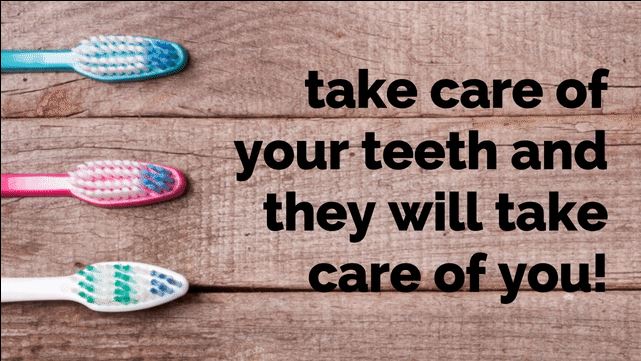
by admin | Apr 11, 2018 | Employee Benefits, Human Resources
 When evaluating employee benefits, essentials such as health and dental plans, vacation time and 401(k) contributions quickly come to mind. Another benefit employers should consider involves subsidizing learning as well as ambitions. Grants and reimbursements toward advanced degrees and continuing education can be a smart investment for both employers and employees.
When evaluating employee benefits, essentials such as health and dental plans, vacation time and 401(k) contributions quickly come to mind. Another benefit employers should consider involves subsidizing learning as well as ambitions. Grants and reimbursements toward advanced degrees and continuing education can be a smart investment for both employers and employees.
Educational benefits are strongly linked to worker satisfaction. A survey by the Society for Human Resource Management revealed that nearly 80 percent of responding workers who rated their education benefits highly also rated their employers highly. While only 30 percent of those rating their higher education benefits as fair or poor conversely rated their employer highly.
These benefits are popular with businesses as well. In a survey by the International Foundation of Employee Benefit Plans, nearly five of six responding employers offer some form of educational benefit. Their top reasons are to retain current employees, maintain or raise employee satisfaction, keep skill levels current, attract new talent and boost innovation and productivity. Tax credits offer additional advantages. Qualifying programs offer employers tax credits up to $5,250 per employee, per year.
At the same time, companies should offer these benefits with care as they do pose potential pitfalls. Higher education assistance can be costly, even when not covering full costs. Workers taking advantage can become overwhelmed with the demands of after-hour studies, affecting job performance. Also, employers would be wise to ensure their employees don’t promptly leave and take their new skills elsewhere.
When well-planned, educational benefits will likely prove a good investment. Seventy-five percent of respondents to SHRM’s survey consider their educational-assistance programs successful. To boost your employee morale, skill levels and job-satisfaction scores, consider the benefit that may deliver them all, and more.
Find out more:
IFEBP: Why Educational Assistance Programs Work
EBRI: Fundamentals of Employee Benefit Programs
By Bill Olson, VP, Marketing & Communications at United Benefit Advisors
Originally posted on UBABenefits.com

by admin | Mar 28, 2018 | Benefit Management, Benefit Plan Tips, Tricks and Traps, Human Resources
 As the costs of health care soar, many consumers are looking for ways to control their medical spending. Also, with the rise of enrollment in high deductible health plans, consumers are paying for more health care out-of-pocket. From medical savings accounts to discount plans for prescriptions, patients are growing increasingly conscious of prices for their healthcare needs. Price shopping procedures and providers allows you to compare prices so that you are getting the best value for your care.
As the costs of health care soar, many consumers are looking for ways to control their medical spending. Also, with the rise of enrollment in high deductible health plans, consumers are paying for more health care out-of-pocket. From medical savings accounts to discount plans for prescriptions, patients are growing increasingly conscious of prices for their healthcare needs. Price shopping procedures and providers allows you to compare prices so that you are getting the best value for your care.
Why do you need to look beyond your nearby and familiar providers and locations for healthcare? Here’s a hypothetical example: Chris is a 45-year old male in good physical health. During his last check-up he mentions to his doctor that he’s had some recent shortness of breath and has been more tired as of late. His doctor orders an EKG to rule out any problems. If Chris went to his local hospital for this procedure, it would cost $1150. He instead looks online and shops around to find other providers in his area and finds he can get the same procedure for $450 at a nearby imaging center. His potential savings is $700 simply by researching locations.
So where do you start when shopping around for your health care? A good place to begin is by researching your health plan online. Insurance companies will post cost estimates based on facility, physician, and type of procedure. Keep in mind that these are just estimates and may vary based on what coverage you are enrolled in. Another way to shop is by checking out websites that have compiled thousands of claims information for various procedures and locations to give an estimate of costs. However, deciphering whether a site is reporting estimates based on the “medical sticker price” of charges or rates for private insurance plans or Medicare is difficult. There are huge differences in prices at different providers for the exact same procedure. This is because contracts between insurance agencies and providers vary based on negotiated amounts. This makes it hard to get consistent pricing information.
Check out these sites that do a great job comparing apples to apples for providers:
- Healthcare Blue Book
- What Kelly Blue Book is to cars, Healthcare Blue Book is to medical pricing
- New Choice Health
- Reports on pricing of medical procedures, providers, quality of facilities, and customer feedback for healthcare in all 50 states
- The Leapfrog Group
- Publishes data on hospitals so patients can compare facilities and costs for treatments and procedures
After compiling all the information on prices and procedures, you can still call and negotiate costs with the location of your care. Fair Health Consumer has tips on how to negotiate with providers and plan for your healthcare needs.
Knowledge is POWER and when you spend time researching and comparing healthcare costs, you are empowering yourself! Exercising due diligence to plan for you and your family’s medical needs will save you money and give you confidence in your decisions for care.

by admin | Jan 10, 2018 | Employee Benefits, Human Resources
 Have you heard the saying “the eyes are the window to your soul”? Well, did you know that your mouth is the window into what is going on with the rest of your body? Poor dental health contributes to major systemic health problems. Conversely, good dental hygiene can help improve your overall health. As a bonus, maintaining good oral health can even REDUCE your healthcare costs!
Have you heard the saying “the eyes are the window to your soul”? Well, did you know that your mouth is the window into what is going on with the rest of your body? Poor dental health contributes to major systemic health problems. Conversely, good dental hygiene can help improve your overall health. As a bonus, maintaining good oral health can even REDUCE your healthcare costs!
Researchers have shown us that there is a close-knit relationship between oral health and overall wellness. With over 500 types of bacteria in your mouth, it’s no surprise that when even one of those types of bacteria enter your bloodstream that a problem can arise in your body. Oral bacteria can contribute to:
- Endocarditis—This infection of the inner lining of the heart can be caused by bacteria that started in your mouth.
- Cardiovascular Disease—Heart disease as well as clogged arteries and even stroke can be traced back to oral bacteria.
- Low birth weight—Poor oral health has been linked to premature birth and low birth weight of newborns.
The healthcare costs for the diseases and conditions, like the ones listed above, can be in the tens of thousands of dollars. Untreated oral diseases can result in the need for costly emergency room visits, hospital stays, and medications, not to mention loss of work time. The pain and discomfort from infected teeth and gums can lead to poor productivity in the workplace, and even loss of income. Children with poor oral health miss school, are more prone to illness, and may require a parent to stay home from work to care for them and take them to costly dental appointments.
So, how do you prevent this nightmare of pain, disease, and increased healthcare costs? It’s simple! By following through with your routine yearly dental check ups and daily preventative care you will give your body a big boost in its general health. Check out these tips for a healthy mouth:
- Maintain a regular brushing/flossing routine—Brush and floss teeth twice daily to remove food and plaque from your teeth, and in between your teeth where bacteria thrive.
- Use the right toothbrush—When your bristles are mashed and bent, you aren’t using the best instrument for cleaning your teeth. Make sure to buy a new toothbrush every three months. If you have braces, get a toothbrush that can easily clean around the brackets on your teeth.
- Visit your dentist—Depending on your healthcare plan, visit your dentist for a check-up at least once a year. He/she will be able to look into that window to your body and keep your mouth clear of bacteria. Your dentist will also be able to alert you to problems they see as a possible warning sign to other health issues, like diabetes, that have a major impact on your overall health and healthcare costs.
- Eat a healthy diet—Staying away from sugary foods and drinks will prevent cavities and tooth decay from the acids produced when bacteria in your mouth comes in contact with sugar. Starches have a similar effect. Eating healthy will reduce your out of pocket costs of fillings, having decayed teeth pulled, and will keep you from the increased health costs of diabetes, obesity-related diseases, and other chronic conditions.
There’s truth in the saying “take care of your teeth and they will take care of you”. By instilling some of the these tips for a healthier mouth, not only will your gums and teeth be thanking you, but you may just be adding years to your life.

by admin | Sep 27, 2017 | Benefit Plan Tips, Tricks and Traps, Employee Benefits, Human Resources
 We’ve all been there – once or twice (or more)—when a child, spouse or family member has had to gain access to healthcare quickly. Whether a fall that requires stitches; a sprained or broken bone; or something more serious, it can be difficult to identify which avenue to take when it comes to walk-in care. With the recent boom in stand-alone ERs (Emergency Care Clinics or ECCs), as well as, Urgent Care Clinics (UCCs) it’s easy to see why almost 50% of diagnoses could have been treated for less money and time with the latter.
We’ve all been there – once or twice (or more)—when a child, spouse or family member has had to gain access to healthcare quickly. Whether a fall that requires stitches; a sprained or broken bone; or something more serious, it can be difficult to identify which avenue to take when it comes to walk-in care. With the recent boom in stand-alone ERs (Emergency Care Clinics or ECCs), as well as, Urgent Care Clinics (UCCs) it’s easy to see why almost 50% of diagnoses could have been treated for less money and time with the latter.
It’s key to educate yourself and your employees on the difference between the two so as not to get pummeled by high medical costs.
- Most Emergency Care facilities are open 24 hours a day; whereas Urgent Care may be open a maximum of 12 hours, extending into late evening. Both are staffed with a physician, nurse practitioners, and physician assistants, however, stand alone ECCs specialize in life-threatening conditions and injuries that require more advanced technology and highly trained medical personnel to diagnose and treat than a traditional Urgent Care clinic.
- Most individual ERs charge a higher price for the visit – generally 3-5 times higher than a normal Urgent Care visit would cost. The American Board of Emergency Medicine (ABEM) physicians’ bill at a higher rate than typical Family-Medicine trained Urgent Care physicians do (American Board of Family Medicine (ABFM). These bill rates are based on insurance CPT codes. For example, a trip to the neighborhood ER for strep throat may cost you more than a visit to a UC facility. Your co-insurance fee for a sprain or strain at the same location may cost you $150 in lieu of $40 at a traditional Urgent Care facility.
- Stand alone ER facilities may often be covered under your plan, but some of the “ancillary” services (just like visit rates) may be billed higher than Urgent Care facilities. At times, this has caused many “financial sticker shock” when they first see those medical bills. The New England Journal of Medicine indicates 1 of every 5 patients experience this sticker shock. In fact, 22% of the patients who went to an ECC covered by their insurance plan later found certain ancillary services were not covered, or covered for less. These services were out-of-network, therefore charged a higher fee for the same services offered in both facilities.
So, what can you and your employees do to make sure you don’t get duped into additional costs?
- Identify the difference between when you need urgent or emergency care.
- Know your insurance policy. Review the definition of terms and what portion your policy covers with regard to deductibles and co-pays for each of these facilities.
- Pay attention to detail. Understand key terms that define the difference between these two walk-in clinics. Most Emergency Care facilities operate as stand-alone ERs, which can further confuse patients when they need immediate care. If these centers, or their paperwork, has the word “emergency”, “emergency” or anything related to it, they’ll operate and bill like an ER with their services. Watch for clinics that offer both services in one place. Often, it’s very easy to disguise their practices as an Urgent Care facility, but again due to CPT codes and the medical boards they have the right to charge more. Read the fine print.
It’s beneficial as an employer to educate your employees on this difference, as the more they know – the lower the cost will be for the employer and employee come renewal time.

 When evaluating employee benefits, essentials such as health and dental plans, vacation time and 401(k) contributions quickly come to mind. Another benefit employers should consider involves subsidizing learning as well as ambitions. Grants and reimbursements toward advanced degrees and continuing education can be a smart investment for both employers and employees.
When evaluating employee benefits, essentials such as health and dental plans, vacation time and 401(k) contributions quickly come to mind. Another benefit employers should consider involves subsidizing learning as well as ambitions. Grants and reimbursements toward advanced degrees and continuing education can be a smart investment for both employers and employees.


